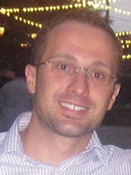Motion-Robust Free-Breathing Abdominal MR Fingerprinting (MRF) Using Radial Acquisition and Temporal Compressed Sensing Reconstruction: Initial Results
E Subashi1*, V Yu2, C Wu3, P Koken4, M Doneva5, R Otazo6, O Cohen7, (1) Memorial Sloan Kettering Cancer Center, New York, NY, (2) Memorial Sloan Kettering Cancer Center, New York, NY, (3) Memorial Sloan Kettering Cancer Center, New York, NY, (4) Philips Medical Systems,(5) Philips Medical Systems, (6) Memorial Sloan Kettering Cancer Center, New York, NY, (7) Memorial Sloan Kettering Cancer Center, New York, NY
Presentations
TH-IePD-TRACK 3-7 (Thursday, 7/29/2021) 12:30 PM - 1:00 PM [Eastern Time (GMT-4)]
Purpose: Quantitative relaxometry in the abdomen is challenging due to respiratory, pulsative, and peristaltic motion. We present an implementation of free-breathing MR-fingerprinting and study improvements in image quality as a function of reconstruction.
Methods: The acquisition method relies on golden-angle radial sampling combined with a varying flip-angle (FA), gradient-spoiled, SSFP MRF sequence. The imaging sequence consists of an inversion pulse followed by the varying FA train and a delay time (Td) to allow for relaxation to thermal equilibrium. The exam parameters were: TR/TE/TI=8/4/15 ms, FOV=25x25cm2, matrix=224x224, and slice thickness=5mm. Two FA schedules were studied. The number of spokes/dynamic was varied in the range [1 2 3 4 5 10] while Td was varied in the range [0.1 1 10] seconds. Golden-angle radial sparse parallel (GRASP) reconstruction was implemented with total variation (tTV) or principal-component analysis (tPCA) as regularization functions in the temporal domain. Template matching was used for T1/T2 calculations. The quantitative maps derived from tTV-GRASP, tPCA-GRASP, and conventional gridding were compared using a NIST phantom with known T1/T2 values. Image quality was also compared in a healthy volunteer during a free-breathing (FB) and (BH) acquisition.
Results: The bias for T1 and T2 was comparable in parameters calculated with gridding and tTV-GRASP, and larger for tPCA-GRASP reconstructions. For T1, we find an approximately two-fold decrease in the standard deviation of maps calculated with tTV-GRASP compared to gridding and tPCA-GRASP. For T2, tTV-GRASP and tPCA-GRASP generated maps with comparable uncertainty but improved when compared to gridding. The improvements were dependent on the number of spokes/dynamic, Td, and FA schedule.
Conclusion: GRASP provides a feasible method for free-breathing MR-fingerprinting with improved image quality and reduced sensitivity to artifacts from physiologic motion.
ePosters
Keywords
Taxonomy
Not Applicable / None Entered.
Contact Email



